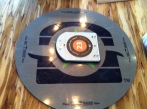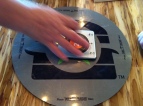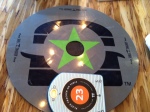Subtitle: Who’s got the chart?
Many practices treat their computer system and software like buying an expensive car that can perform at a really high level and just parking it in the driveway. It has the potential to do so much more than what you are asking it to do.
Many years ago, Omer Reed said, “If it has been done, it is probably possible.” Well, IT has been done in a multitude of practices. In fact, in Australia, most have been paperless for over a decade – yes, a decade!
 On the other hand, in the U.S, we still enter way too many practices where the computer is simply being used for scheduling while a full wall of ugly paper charts is somewhere close by. They are looming like a monster, consuming time and resources and creating chaos and confusion, while the lowly computer, with it’s hidden potential, sits and waits…and waits to vanquish the foe.
On the other hand, in the U.S, we still enter way too many practices where the computer is simply being used for scheduling while a full wall of ugly paper charts is somewhere close by. They are looming like a monster, consuming time and resources and creating chaos and confusion, while the lowly computer, with it’s hidden potential, sits and waits…and waits to vanquish the foe.
There are many compelling reasons for moving to a paperless practice. I’ve combined my thoughts with those expressed in an article by Sandy Roth over a decade ago to address all the excuses against and reasons for going ALL PAPERLESS.
Let’s first examine the excuses we hear for NOT making the full leap:
1. It’s too time consuming (translation: cost and hassle). Baloney. We would argue that nothing that you purchase for your practice equals the savings you will discover from going fully paperless. Investing the time necessary to fully learn the software and train staff is no different than the time required to learn how to use the digital xray equipment or other clinical tools you have integrated.
2. Not enough space. Baloney again. Flat panel displays and wireless keyboards with wireless networking can fit into almost any treatment area. And what about ipads that can fit in drawers and can be readily available? No excuses here.
3. Fear of losing data or compromising data. If its good enough for the Federal Reserve Bank it ought to be good enough for a small business like a dental practice. If you don’t trust storing or backing up your data on the Cloud, perform a double backup of your data every day and store one set off site. It can happen seamlessly without supervision. No excuse here.
4. Legality and HIPPA. Triple baloney. That problem has been solved and we would submit that digital documentation trumps written notes any day when it comes to litigation.
5. Staff doesn’t want to do it. Too bad! There is such a thing as outgrowing a team. Technologically resistant staff are obsolete staff. If the job requires learning a new skill, that is the requirement for continued employment. Living in the dark ages is not acceptable in a modern dental practice.
6. Too much trouble. A learning curve for any new system or task is to be expected, so build that into your budget of time and energy. Give yourselves a break as you’re integrating any new concept into your practice and you won’t be disappointed.
Now that I’ve tackled the objections, let’s outline the benefits in more detail:
1. Information is available to everyone on the team – simultaneously. When you work with a paper chart, the only person who can access the information is the one with the chart. In a paperless, computer-driven practice, data can be accessed by every terminal on the network. The dentist can be planning treatment and the patient care coordinator can be entering financial arrangements. The assistant can be charting and the business assistant can be sending the insurance claim for processing. The telephone receptionist can be looking up the date and time of the next scheduled appointments while the facilitator is looking at the notes regarding previous conversations with the patient. (I know – some software systems haven’t quite figured out how to let you do this and I say, shame on them!)
2. Writing notes takes longer than typing them into the computer and are likely to be less complete. When tasks are easier, they are more likely to be done and to be done consistently. Notes taken on the computer are almost always more complete, and people report that they get into the habit of writing notes on the computer pretty quickly. AND THEY ARE LEGIBLE!

3. The computer is easy to find…charts cannot be counted on in that way.They have a way of going missing. Who has the chart? Did the
doctor take it home? Is it buried somewhere in his black hole office? Does the hygienist have it? Has the business manager held onto it for collections purposes? Where can it be?
When a patient calls in to cancel, or with an urgency, or to ask an insurance or billing question, having instant access to the chart on the computer can save huge amounts of time and provide important history to address the call in an expedient and appropriate way.
4. Tired of bringing an expandable briefcase or box full of charts home? You can tap into your computer off-site and access patient information.
5. Handwriting and legibility is no longer an issue.
6. No more confusion about where the information is. No more asking if it is in the computer notes or in the paper chart. No question of whether information goes on the green sheet or yellow sheet. And no more routing slips. Information is stored in logical and consistent places on the computer and everyone knows where to find it.
7. Saves trees.
8. Eliminates the ugly, untidy chart wall.
9. Records of insurance submissions are kept on-line so no riffling through stacks and piles of paper to find what you need.
10. Miscellaneous information is easily scanned into the database, so
letters from and to referring dentists, notes from the patient, signed financial agreements and authorizations can be kept handy and easily accessible.
11. One-write systems. Write it once and its done. No writing things on the chart, on the route slip, on the day sheet, in the notebook that is kept in the front, in the display board in the lab and the log of lab cases. It’s enough to drive a person crazy. No wonder there are so many mistakes and so much confusion in so many practices!
12. Information is power. When more information is collected, recorded, retrieved and reviewed, the practice runs more smoothly, relationships with patients are stronger, confusion is minimized and misunderstandings are headed off at the pass. Less confusion, misunderstanding, mistakes, and angered patients equal less legal vulnerability as well.
If you were to visit a fully paperless practice, you would see the impact it has. Team members are more prepared, more informed and more involved in patient relationships as a result. Information is more accurate and more likely to be recorded. When it is recorded, it is more likely that team members will look for it. As a result, information which is gained is actually used and the relationships with patients are more successful.
Find out exactly what it would take for you to eliminate the paper and plan to GO FULLY PAPERLESS before the end of the year. Circle the date on the calendar and contact me for your Going Paperless White Paper and to arrange a team teleconference to get started.
 How can fee-for-service practices compete with those who are in network?
How can fee-for-service practices compete with those who are in network? 





 often he has to change the location of the tracker for his customers. He told us “about 40% of the time…”. So, four out of every ten orders, he runs around the restaurant having to “fix the system”. I asked him if there might be a better way to find the right table without all the unnecessary effort. His reply was something along the lines of “Yes. But it’s part of the BurgerFi experience.”
often he has to change the location of the tracker for his customers. He told us “about 40% of the time…”. So, four out of every ten orders, he runs around the restaurant having to “fix the system”. I asked him if there might be a better way to find the right table without all the unnecessary effort. His reply was something along the lines of “Yes. But it’s part of the BurgerFi experience.” We may not like it but we are constantly in a state of change.
We may not like it but we are constantly in a state of change.



